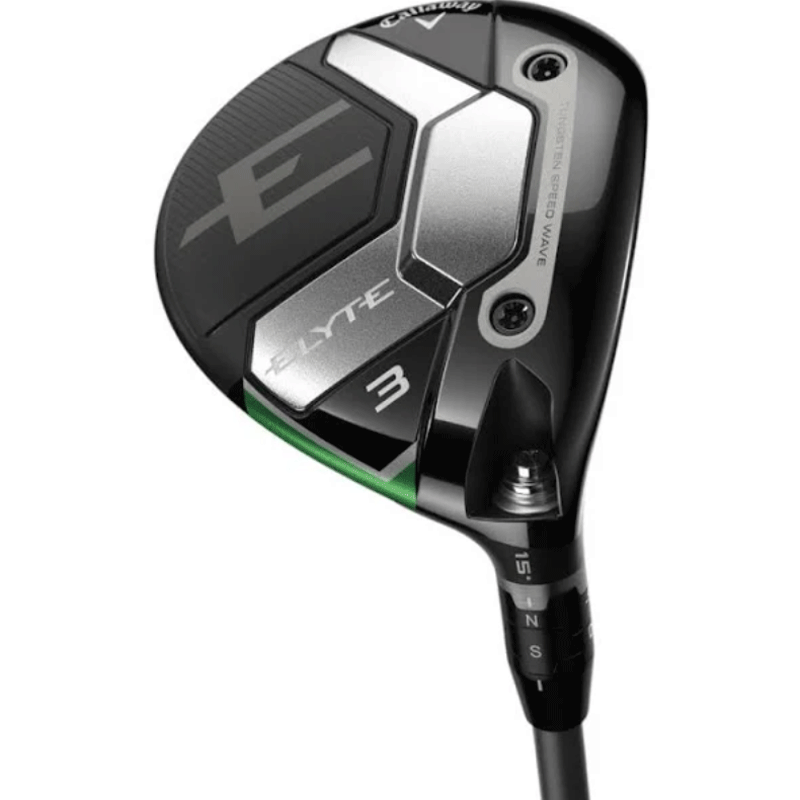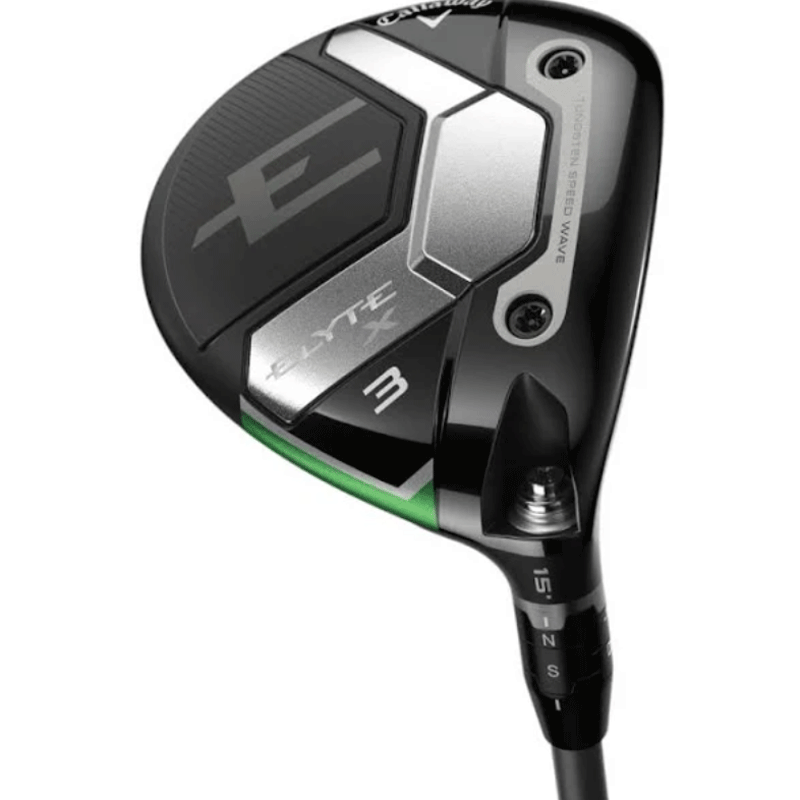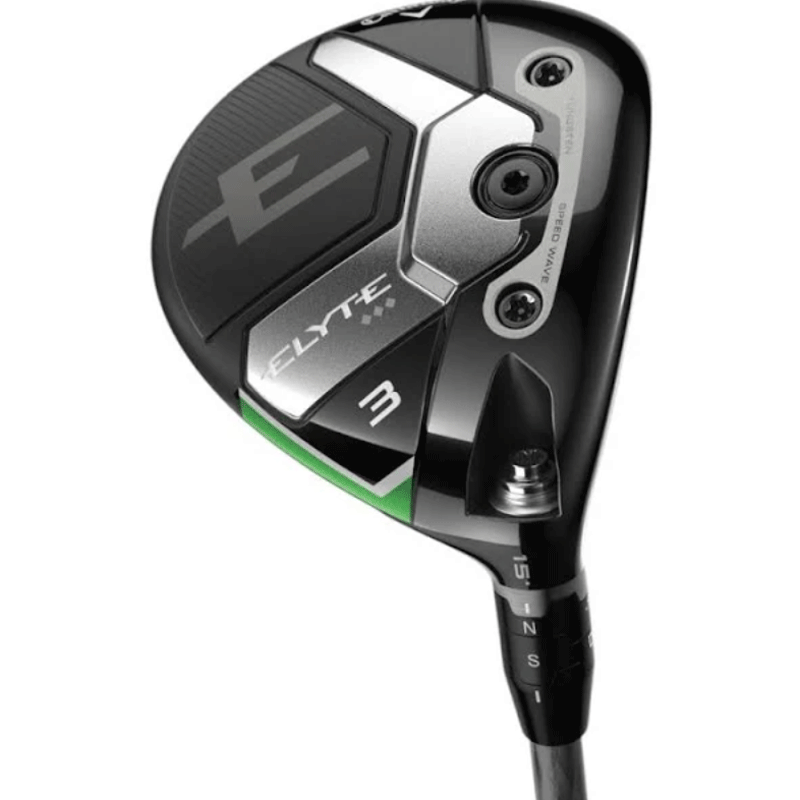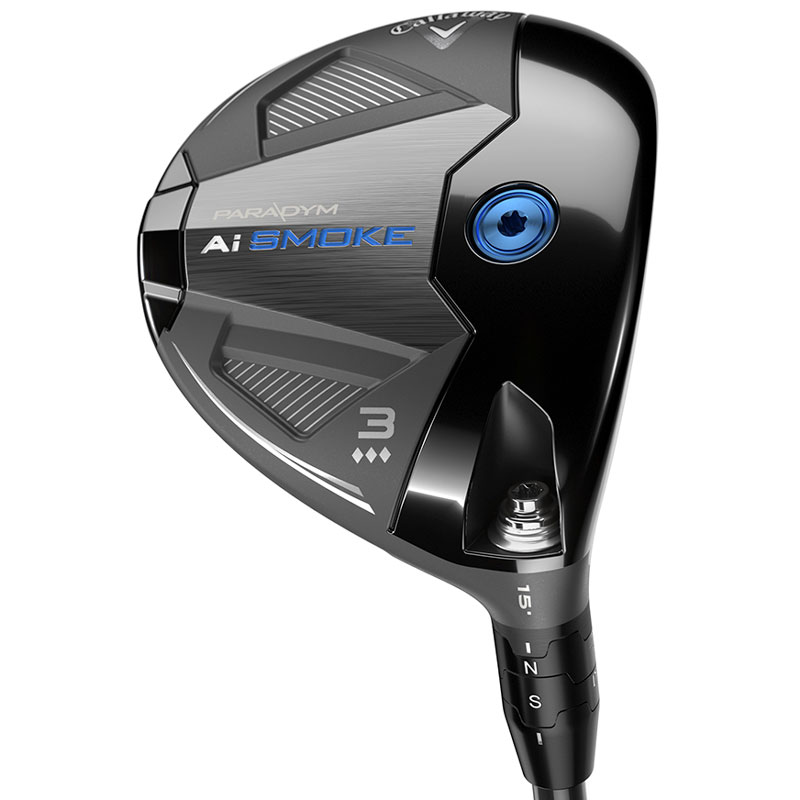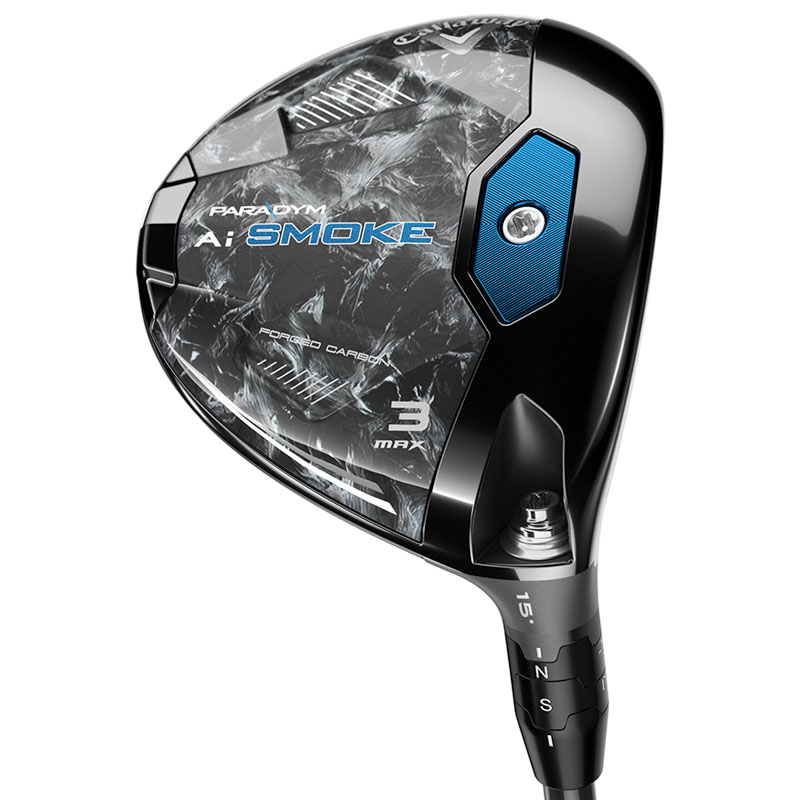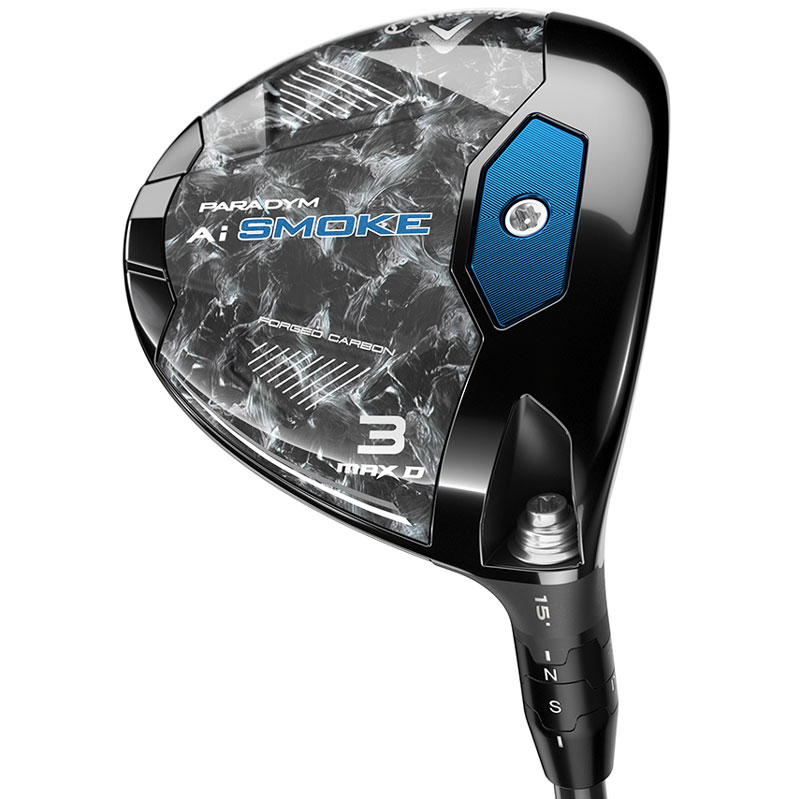Best Callaway Fairway Woods 2025
Check out the best Callaway fairway woods that are currently available on the market

Conor Keenan
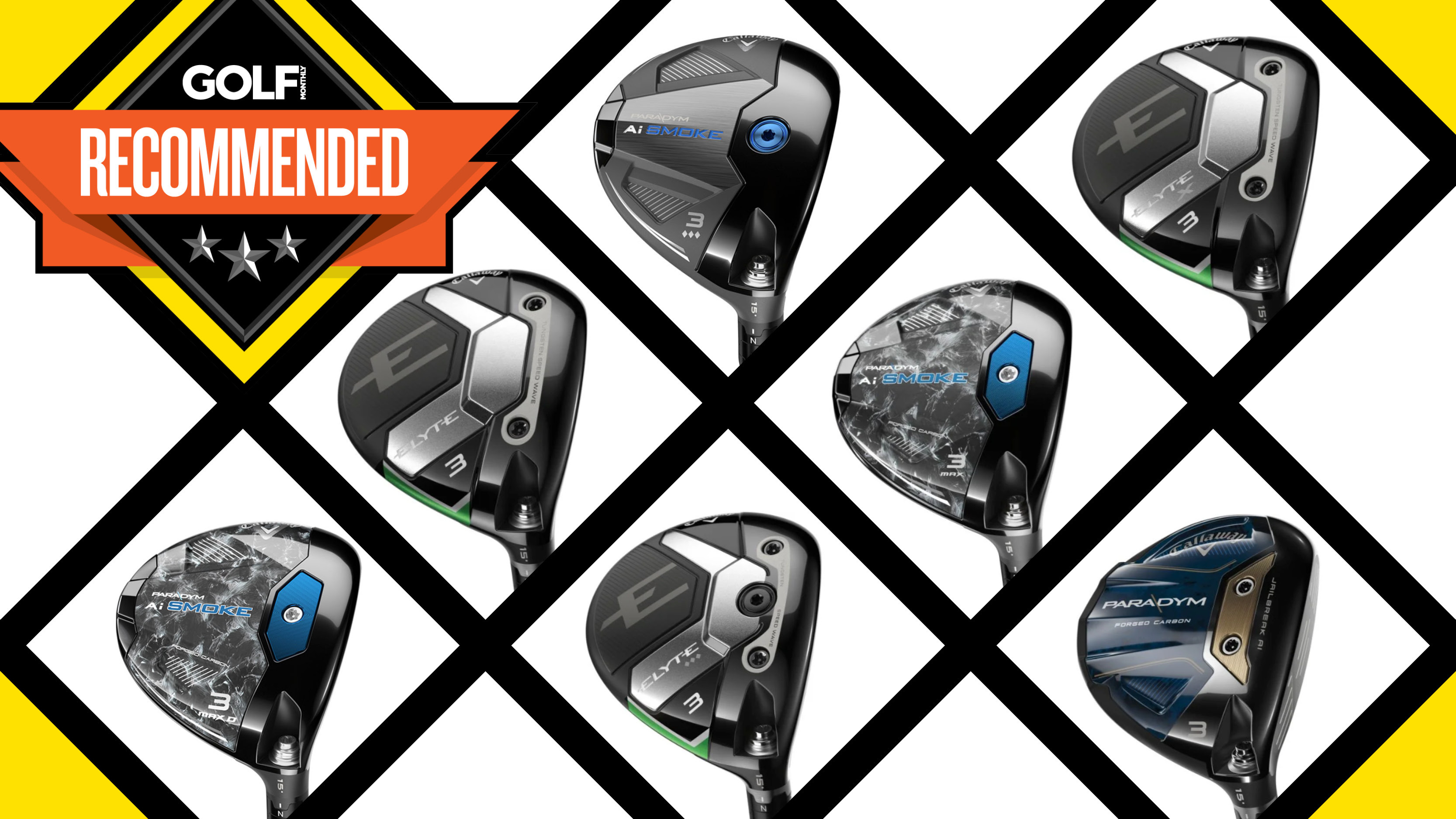
As you would expect from one of the game's most highly respected golf manufacturers, Callaway makes some of the best fairway woods on the market. With something for golfers of all skill levels from Tour Pro to Sunday hacker, Callaway have all bases covered. Models are designed for all requirements, so whether you need extra distance, more workability or you just need to tighten up that dispersion, Callaway have a model to suit your needs.
Many of the game's top professionals choose Callaway and you will see their fairway woods in the bags of top stars like Xander Schauffele, Jon Rahm, Nicolai Hojgaard and Minjee Lee. It's also one of the most played brands among pleasure golfers too due to the variety on offer.
With this in mind, we have tested some of the best Callaway fairway woods and we will explain exactly which type of golfer they are aimed at - from the new Elyte range all the way to the older Paradym Ai Smoke models. If for whatever reason you don't find anything you like in this guide, then check out our guides on the best Ping fairway woods or the best TaylorMade fairway woods to see if they are suited more to your tastes.
The Quick List
Best Callaway Fairway Woods 2025
Elyte
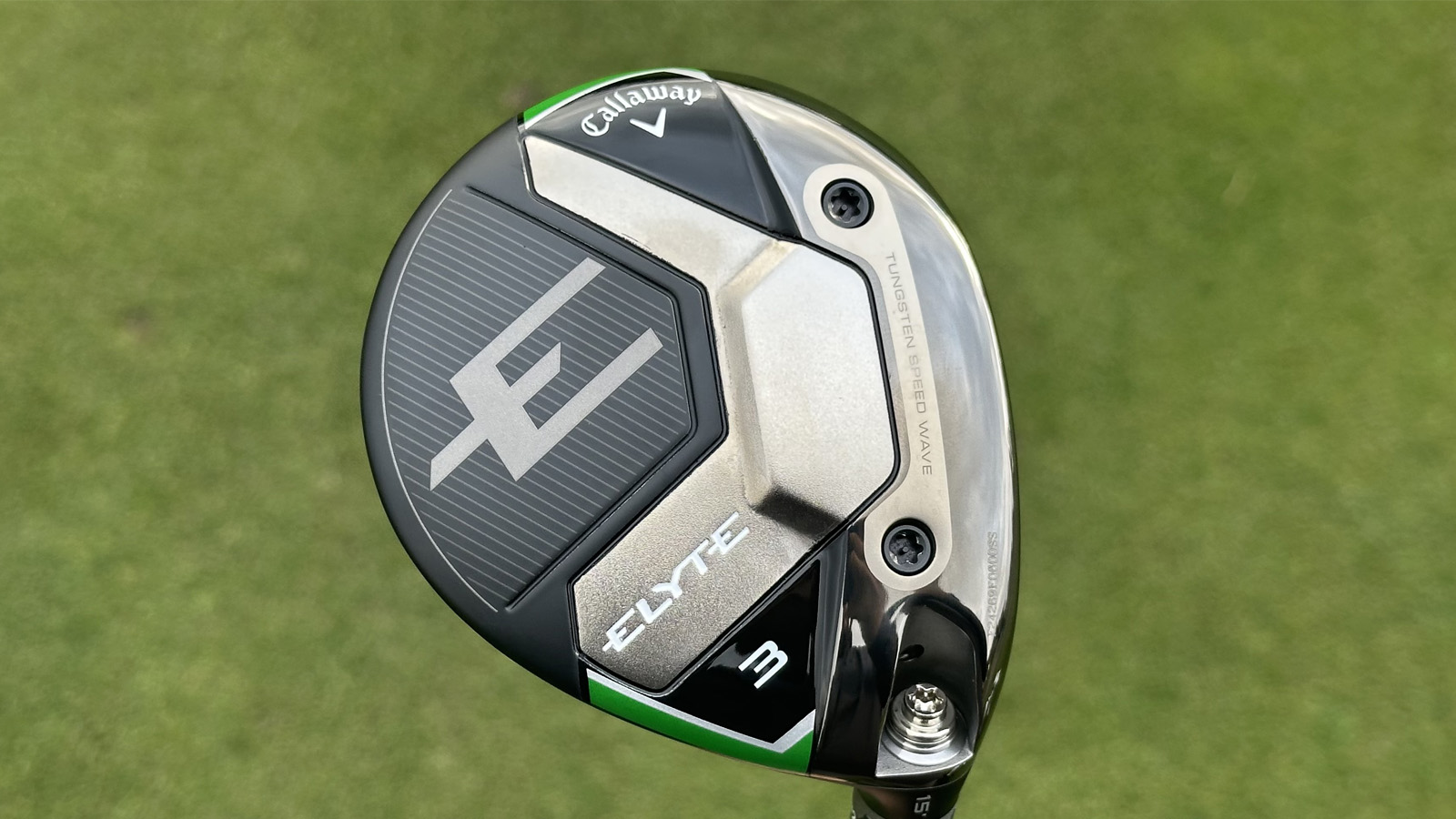
Specifications
Reasons to buy
Reasons to avoid
When we opened the box to unveil the new Elyte fairway wood ahead of testing, we were a little disappointed in the visuals of the golf club. It was always going to be difficult to back up the beautiful Ai Smoke family of woods, but what the Elyte lacks in looks it makes up for in performance.
Our tester Sam De'Ath crowned the Callaway Pardym Ai Smoke Max fairway wood as the best model on the market in 2024, so had high expectations for Callaway's latest release. First impression on the course were great - nice turf interaction, consistent flight and a nice feel through contact.
The Elyte clubface is designed through the use of Artificial Intelligence the same as on the previous Callaway metalwood lineup but now with considerably more data input to create their most stable clubface to date. The result is one of the most forgiving fairway woods on the market. While Callaway has arguably taken a small step back in regards to the aesthetics of the new Elyte fairway wood range, the performance certainly does the talking.
- Read our full Callaway Elyte Fairway Wood Review
Callaway Elyte X Fairway Wood
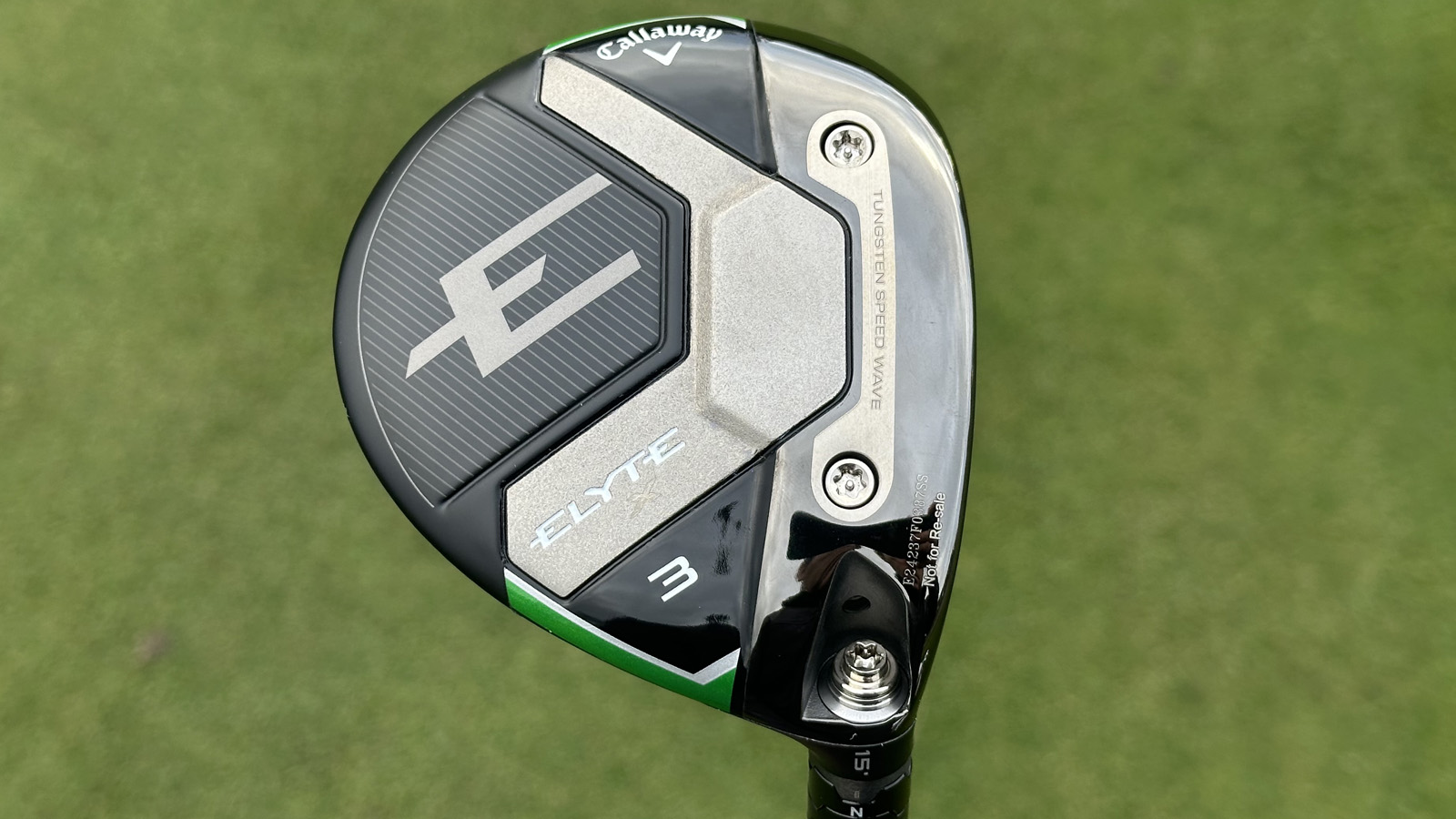
Specifications
Reasons to buy
Reasons to avoid
The 'X' member of the Elyte family is designed for higher handicap players, those who potentially struggle with launch when it comes to driver and woods. The Elyte fairway wood helps with both launch and ball flight, giving players the opportunity to pick up a few extra yards with a good strike.
The feel is soft but powerful - there is much to choose between the standard Elyte and Elyte X models in regards to feel or aesthetics but both perform as well as the best fairway woods on the market.
During testing it delivered effortless launch and a nice high draw ball flight even when struck towards the heel. Spin levels were high, as expected, but never ballooned to unsustainable levels and cause a loss in distance.
The 'X' is a terrific option for players who want a high launching, right to left ball flight with their fairway metal. For those that want something a bit flatter that could gain you a few extra yards with a more neutral ballfight, the original Elyte could be the better pick.
- Read our full Callaway Elyte X Fairway Wood Review
Callaway Elyte Triple Diamond
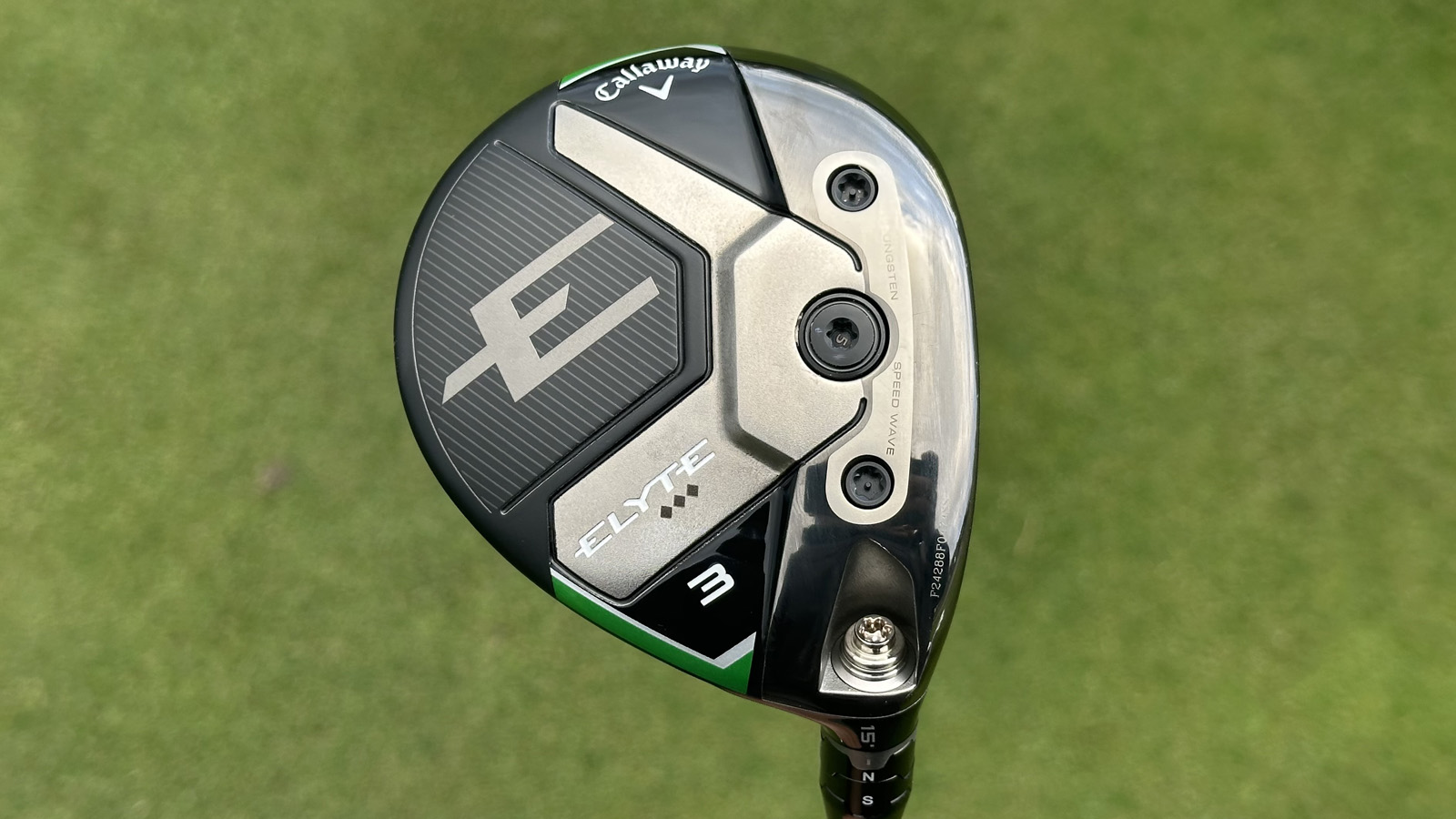
Specifications
Reasons to buy
Reasons to avoid
The Triple Diamond is the most advanced fairway wood of the Elyte family, catering towards advanced to elite golfers - this is not the club to go for unless you're comfortable with fairway metal in hand!
In the looks department, the Triple Diamond differs from the Elyte and Elyte X models due to the glossy black head as opposed to the matte carbon fiber crown found on the other models. It does make the head look more compact as a result, which we think is a good thing.
In terms of performance, this club produced fantastic results when struck out of the middle of the face. During testing Sam's best strike carried 264 yards with a total of 289 yards - the longest of the three models by far - but there was so much variance on distance on mishits. The feel is also a little firmer than other options in the range.
The Triple Diamond model does feature a removable weight on the sole just behind the Speed Wave to help lower the flight and spin. It's a model that will appeal to elite players but mid to higher handicappers would be better suited to the Elyte or Elyte X models.
- Read our full Callaway Elyte Triple Diamond Fairway Wood
Paradym Ai Smoke
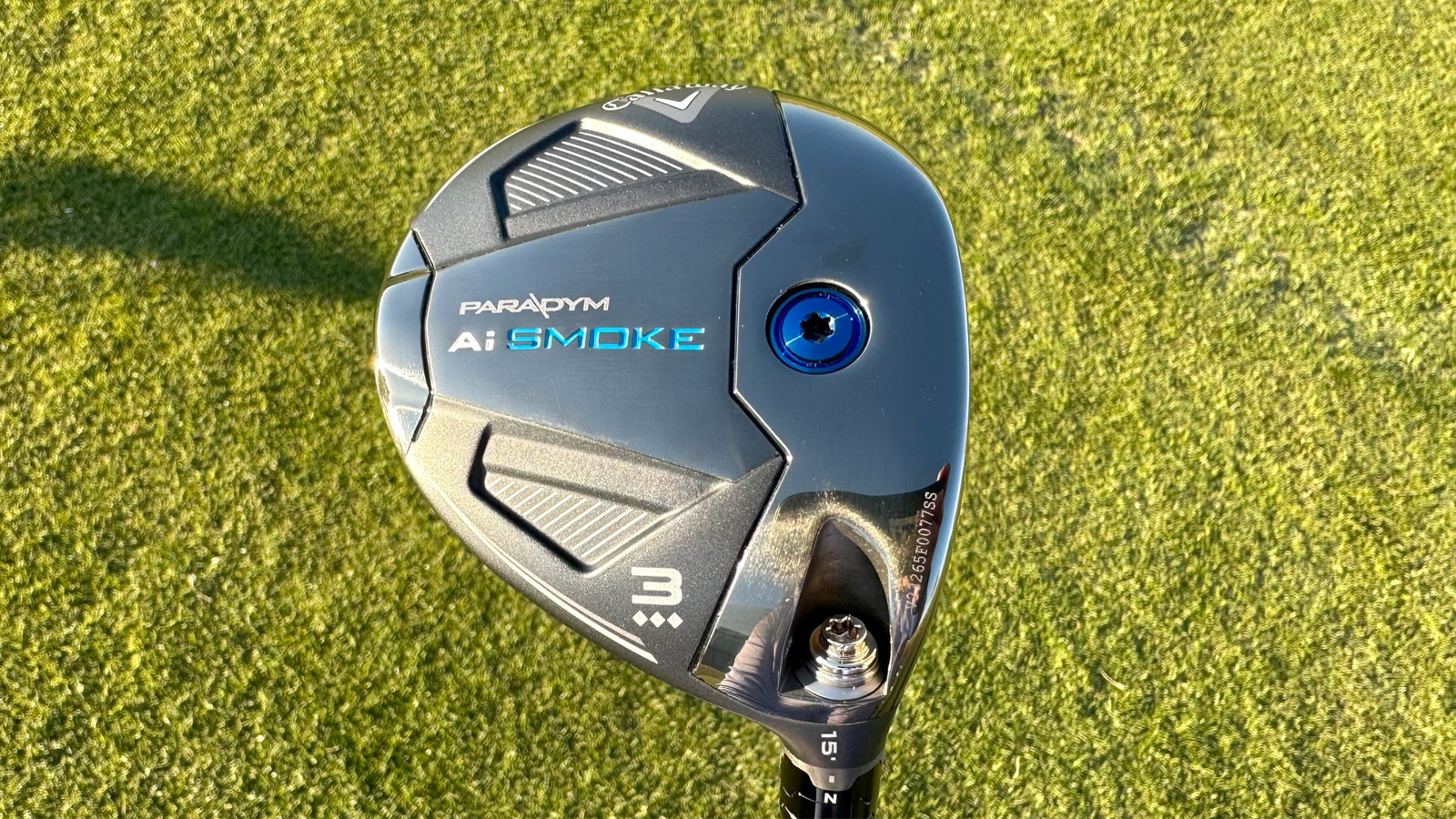
Specifications
Reasons to buy
Reasons to avoid
Our next choice is the Ai Smoke Triple Diamond fairway wood, which is very much aimed at the more accomplished golfer with a more confident and faster swing. Xander Schauffele had this club in the bag when he claimed two of the four majors on offer in 2024. The design of the Triple Diamond is very compact with a deeper face. This does mean that it looks quite intimidating when positioned behind the ball so it certainly won't appeal to a newer golfer, but it really is a great fit for a lower handicapper.
Interestingly, the Triple Diamond doesn’t feature the same crushed carbon sole that the other fairways and drivers in this family have. Instead, it has a more traditional-looking steel sole which features an extra weight port towards the face of the club encouraging a lower ball flight.
Our testing showed that the Triple Diamond was - as expected - harder to strike than the other more forgiving fairway woods in the Paradym Ai Smoke range and it certainly isn't going to produce good results for lesser skilled players. Nevertheless, we still loved the performance on offer, especially when used off the tee. The new Smart Face reduces the negative effect from off-center strikes and another positive factor is that we found that the ball flight was easier to manipulate in strong winds than we had expected it to be.
Callaway Paradym Ai Smoke Max Fairway Wood

Specifications
Reasons to buy
Reasons to avoid
The 2024 Callaway Paradym Ai Smoke fairway woods featured new and improved aesthetics at the time and, got their name as a result of the white and gray crushed carbon sole it has. The beauty of this design is that, at address - especially when playing in the sun - the aesthetics of the sole and carbon crown look stunning.
When we took the Max version out for testing, we really enjoyed the performance it delivered. It was so extremely forgiving and easy to play with that we added it to our best fairway woods for mid-handicap golfers guides. The forgiveness offered by this club was a real stand out feature and is a result of the Ai Smart Face that’s been implemented across the entire Paradym Ai Smoke family. Callaway are industry leaders in Ai technology, using data from thousands of golf shots which is sent to their ‘super computer’ to help create a club face with various sweet spots for increased consistency and improved ball flight and spin rates.
Our experience showed that the forgiveness of this club made it far easier to play even the toughest of shots and the versatility was another impressive aspect. All things considered, the aesthetic combined with the performance means this is tough to beat as a good all-rounder fairway wood in today's market.
- Read our full Callaway Paradym Ai Smoke Max Fairway Wood Review
Callaway Paradym Ai Smoke Max D Fairway Wood
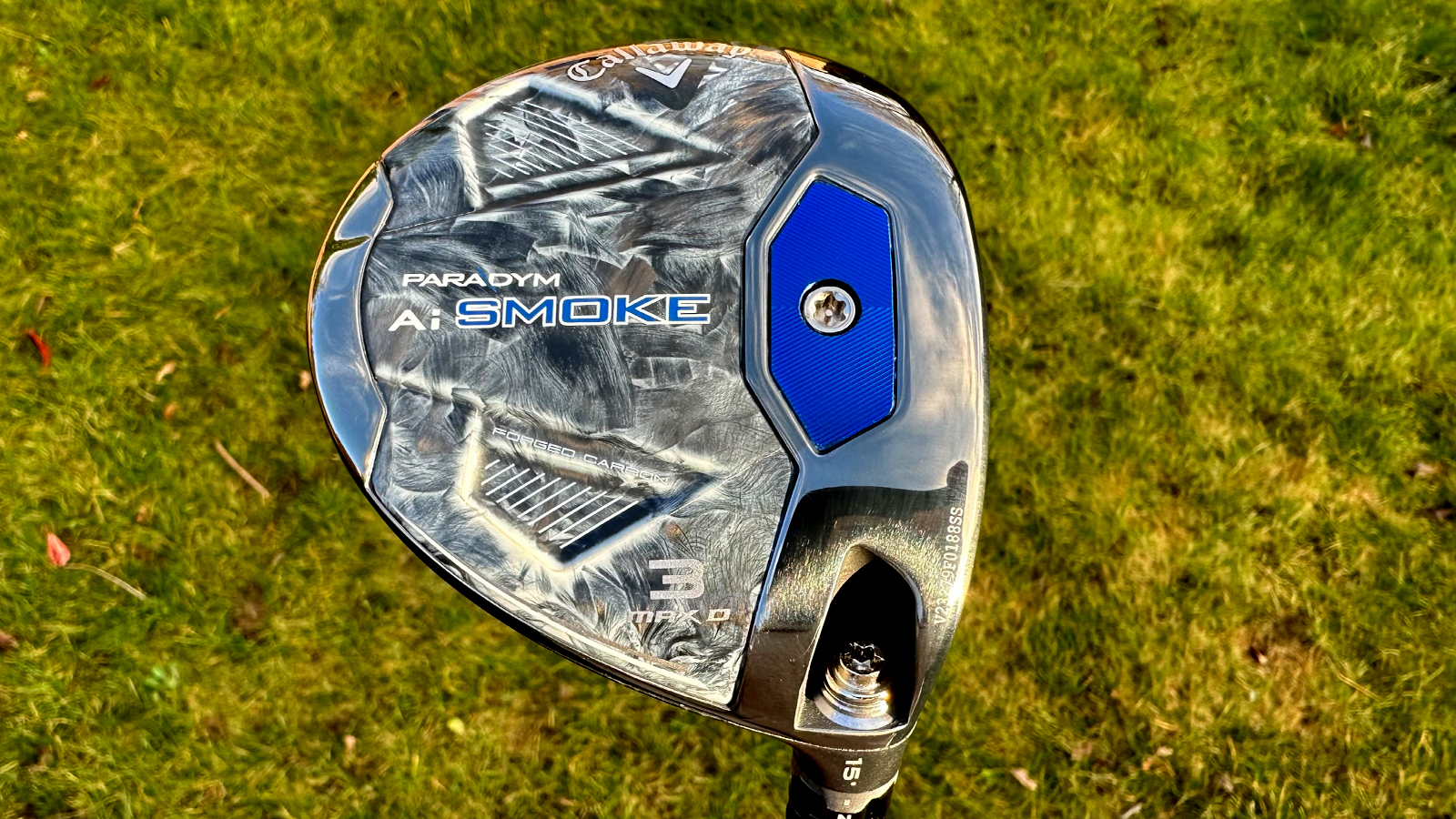
Specifications
Reasons to buy
Reasons to avoid
The Paradym Ai Smoke Max D is ideal for mid-high handicap players and has been designed to aid a high launch and draw-bias. To achieve this, it has a more upright lie angle and has a larger head than the standard Max club.
In testing it performed exactly as we would want a Max D model to. We experienced really impressive levels of forgiveness and also saw consistently high draws. It's an easy club to play with and will definitely help those who lack consistency or who suffer from a slice. We would say this is one of the most forgiving fairway woods we’ve played with, as even shots struck on the heel travelled a good distance and maintained a powerful ball flight. The Ai Smart Face technology really makes this family of clubs easy top use, as the various sweet spots across the face really aid forgiveness and performance.
In our experience it was from the first cut of rough where we really felt this club separated itself from the other models in the range. The shallow club face and high MOI ensured that launching the ball from thick, wet rough was effortless, which really helped on those longer holes when faced with a lengthy approach. In summary, for higher handicappers and golfers who struggle with their fairway wood, the Paradym Ai Smoke Max D is a fantastic option that will really help your game.
- Read our full Callaway Paradym Ai Smoke Max D Fairway Wood review
How we test fairway woods
When it comes to Golf Monthly's testing procedure, we use the same ethos and methodology for all golf products to make sure all of our reviews and buying guides are as honest, insightful and comprehensive as possible. The testing process for clubs usually starts by attending product launches where we can meet with the manufacturer’s R&D experts to understand the new technology.
Our first port of call when hitting clubs is usually the indoor simulator at Foresight Sports, where the team can test in a controlled environment using premium balls and the GCQuad launch monitor. We also use TrackMan at golf facilities across the UK. Next up is outdoor testing which takes place at a variety of driving ranges and courses close to where members of the gear team live.
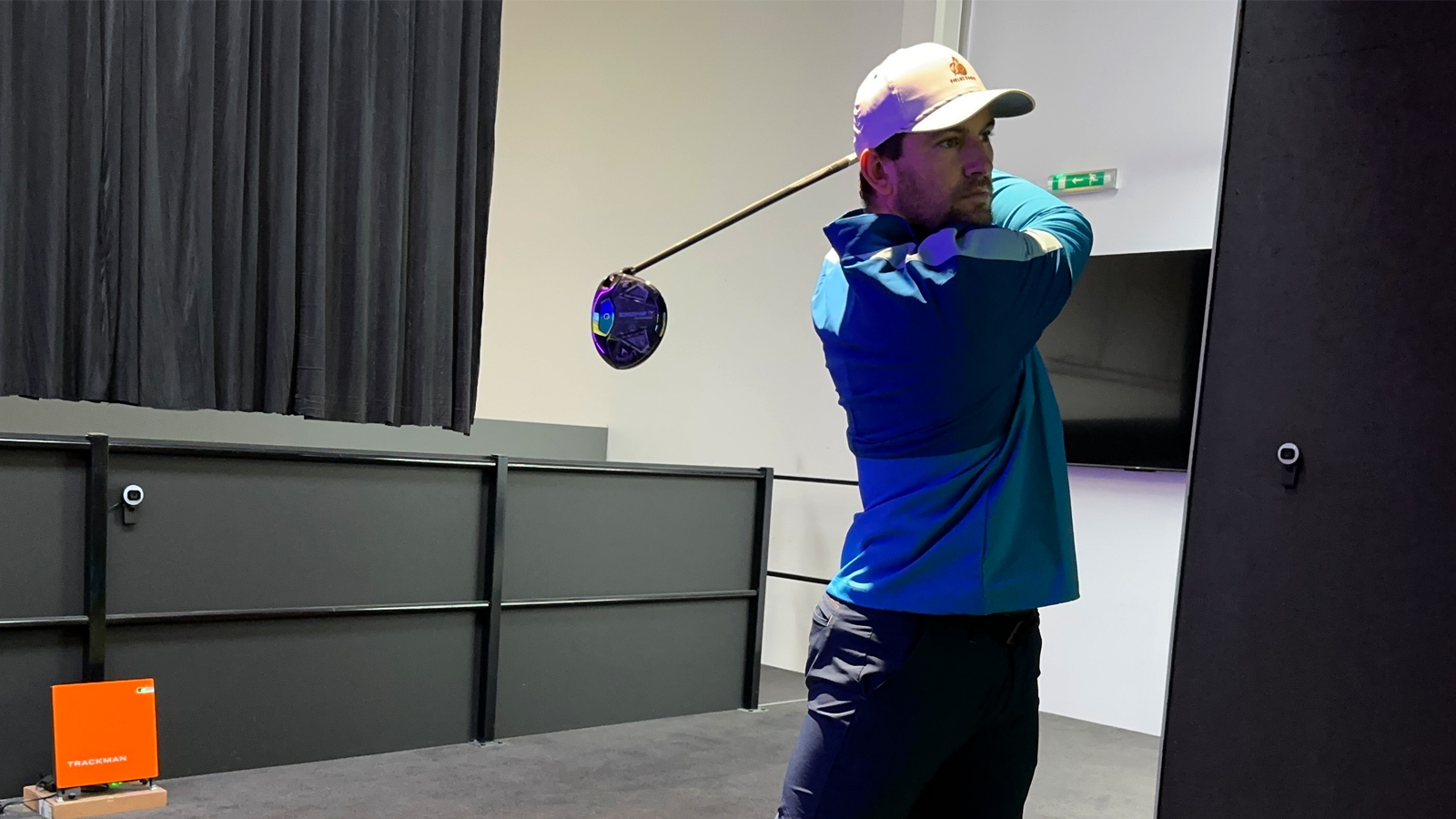
Specifically for fairway woods, product testing is headed up by Sam De'Ath, a former EuroPro and Clutch Pro Tour professional with many years of experience in the golf industry. He is ably assisted by technical editor Joel Tadman, and editor Neil Tappin. All three have been testing clubs for many years, and can efficiently test the vast majority of the biggest product releases and convey the pros and cons eloquently.
How to choose a fairway wood
Nowadays manufacturers are putting a lot of technology into producing fairway woods and the variety on offer is impressive. This does mean that getting the right club for your needs can sometimes be overwhelming if you aren't sure what you are looking for. From jailbreak clubfaces to tungsten weights, there is a lot to take into consideration, but don't fret. We've set out some key points below for you to consider when picking your next fairway wood.
1. Loft
The most important thing is loft as you need to know the specific gap to be filled in your golf bag. Ask yourself how far does my driver go, and how far do your longest irons or hybrids go? Knowing this will dictate the ideal loft for your fairway wood. You might opt to not have a three wood and go with a five instead, or perhaps both. A higher lofted wood could replace a hybrid or mid-iron.
2. Forgiveness
Some fairway woods are more forgiving than others, largely because manufacturers usually create different models for different levels of player. For example, there are three different Callaway Elyte fairways with different head sizes, shapes and they are designed for different golfers. If you need as much help as possible, the Elyte X will work for you, whilst if you are a better player and strike is more consistent, then forgiveness may not be a key factor for you and something like the Callaway Elyte Triple Diamond listed above would be. good option.
3. Adjustability
Most modern fairway woods come with a degree of adjustability, whether that’s loft, moveable weights or shaft fittings. Think about how important adjustability is to you, because you can change the characteristics of a club’s performance with a turn of a wrench. Or, you can keep things simple and opt for a non-adjustable model with a stock shaft you hit well.
4. Versatility
Fairway woods must work well off the tee, on the ground from different lies and even around the green. If you have a model that works in only one of these areas, then there may be plenty of improvement and flexibility in upgrading your fairway woods. Again, higher lofted woods should be considered if you struggle with mid-long irons.
5. Looks
You have to like how a golf club looks, especially when looking down on the golf ball. The fairway wood is one of the most difficult clubs to hit, which is why you need something that gives you confidence and may even spark a pang of jealousy in your playing partners. My advice is go and pick several models, see how they look and feel in your hands and test them in a variety of situations and lies.
6. Budget
Be aware of your budget. You can go for more premium models, such as the TaylorMade Qi35 or Titleist GT3 or you can opt for cheaper designs like the Wilson Launch Pad. Wherever you fall in budget, our guides will present you with good advice on buying a new fairway wood. From a Callaway perspective there is obviously a clear difference in price between the Elyte and Paradym Ai Smoke ranges because one is newer than the other.
If you're after new clubs for the top end of the bag, be sure to also check out our guides on the best fairway woods for high handicappers, the best golf hybrid clubs or best golf utility irons.
FAQs
What fairway woods should I carry?
That depends on your style of play, the clubs that you're comfortable hitting and the other clubs that you have at your disposal. Ultimately most golfers like to carry a three wood and a five wood to bridge the gap between their hybrids and their driver. But many low handicappers often remove their five wood and replace it with another hybrid or another wedge. Higher handicap players may switch our a five iron for a seven wood. Ultimately, there is no right or wrong answer here, only what feels right for your game so keep an open mind and feel free to experiement.
How do you hit a fairway wood?
When it comes to hitting a fairway wood ball position is arguably the most important aspect. Many golfers will often have the ball too far back in the stance so there’s not enough loft at impact. With fairway woods, make sure you have the ball just inside your left heel, this will be far enough forward to help shallow out the angle of attack out a little.
The second thing is that you need a nice wide base, so your stance should be shoulder-width or a fraction more. Too narrow here and you’re going to get too much weight towards the left foot. Your weight distribution at address should be evenly balanced between your feet – think 50/50.
For further advice on the best way to hit a fairway wood, check out our guide here.
When should I use my fairway wood?
Fairway woods are distance clubs that can be used when you're either on the tee or on the fairway, and are trying to send the ball a long distance to the hole. They are designed to be played from the fairway but can also be played from the rough. Ideally though, it's better to play your hybrids from the thicker cuts of rough, but you can opt to use a fairway wood, so long as the ball isn't sitting up in thick grass.
Subscribe to the Golf Monthly newsletter to stay up to date with all the latest tour news, equipment news, reviews, head-to-heads and buyer’s guides from our team of experienced experts.

Sam has worked in the golf industry for 14 years, offering advice on equipment to all levels of golfers. Sam heads up any content around fairway woods, hybrids, wedges, putters, golf balls and Tour gear.
Sam graduated from Webber International University in 2017 with a BSc Marketing Management degree while playing collegiate golf. His experience of playing professionally on both the EuroPro Tour and Clutch Pro Tour, alongside his golf retail history, means Sam has extensive knowledge of golf equipment and what works for different types of golfers.
- Conor KeenanGear & Ecommerce Writer
